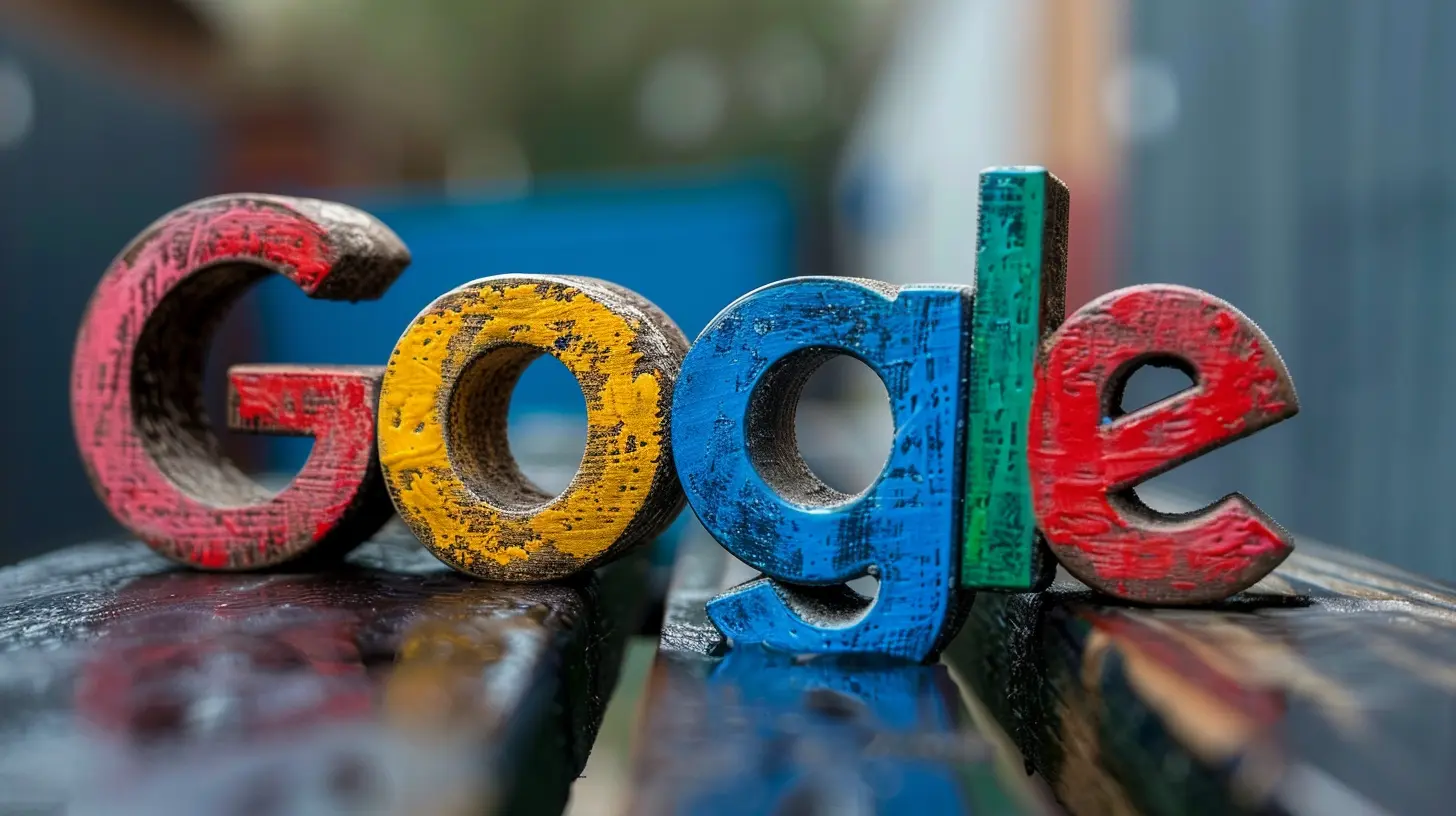The Intersection of SEO and Digital PR: A Guide to Link Building
31 October 2025
Let’s face it — in the digital world, visibility is everything. If you're not showing up on search engines, you're practically invisible. That’s where SEO comes in. But here’s the thing: traditional SEO on its own isn’t enough anymore. You need a little something extra.
Enter Digital PR — the cooler, more outgoing cousin of traditional public relations. When combined with SEO, it becomes a powerful strategy for building high-quality backlinks and boosting your site’s authority.
So, if you’ve been wondering how to build links that actually help you move the needle on Google, you're in the right place. This guide is all about the intersection of SEO and Digital PR and how it can transform your link-building game.
What is Link Building, Really?
Let’s start with the basics. Link building is the practice of getting other websites to link back to yours. These links are like votes of confidence to Google. The more quality “votes” you have, the more trustworthy your site seems — and the better your chances of ranking higher in search.Now, not all links are created equal. A link from a big-time news site like Forbes or BBC? Gold. A link from some random spammy blog? Not so much.
But here's the challenge: getting those high-quality links isn’t easy. That’s where digital PR steps in like a superhero in a cape.
SEO vs Digital PR: What’s the Difference?
Before we dive into how they team up, let’s clear the air on what each one actually does.- SEO (Search Engine Optimization) is all about improving your website so it performs better on search engines. This includes optimizing your content, fixing technical issues, and yes — building backlinks.
- Digital PR, on the other hand, is like PR for the internet age. Instead of pitching to newspapers and TV stations, you’re pitching to bloggers, online journalists, and influencers. It’s about creating buzz and grabbing attention online.
So the main difference? SEO is more technical and data-driven. Digital PR is more creative and relationship-based. But when you put the two together? Magic happens.
Why Digital PR is a Game-Changer for Link Building
Let’s break it down. Traditional link building can be, well… kind of dull. You send out cold emails or hunt around for broken links like a digital archaeologist. You might score a few wins, but it’s a slog.Digital PR flips the script. Instead of begging for links, you’re creating newsworthy content that people actually want to link to. You’re telling stories, sharing insights, maybe even causing a little controversy. And journalists? They eat that stuff up.
Here’s why digital PR works so well for SEO:
- Earned Links, Not Bought: Google loves natural backlinks. When you get journalists to link to your content because it’s genuinely useful or interesting — not because you paid them — that’s the kind of link Google trusts.
- High-Authority Domains: Digital PR helps you land links from major news outlets, industry magazines, and big-name blogs. These are the crème de la crème of backlinks.
- Scalability: One great PR campaign can land you dozens — sometimes hundreds — of links from multiple sources. Traditional link outreach? Not so much.
The Anatomy of a Successful Digital PR Link Building Strategy
So how do you actually do this? Let’s walk through the steps for crafting a digital PR campaign that gets results.1. Find the Story Worth Telling
Everything starts with a great story. Think: What can you share with the world that’s interesting, surprising, or useful?Here are a few ideas:
- Original research or data
- A quirky internal company stat
- Industry insights or predictions
- A strong opinion on a hot topic
- A unique customer or employee experience
People love content that makes them go, “Wow, I had no idea,” or “That’s wild!”
2. Create Killer Content Around It
Once you’ve got your story, you need a piece of content to back it up. This could be:- A blog post
- A press release
- An infographic
- A video
- A thought leadership article
Whatever format you choose, make sure it’s professional, engaging, and easy to share.
3. Build a Targeted Media List
Now comes the outreach. But don’t just blast your story to every journalist on the planet. Take the time to build a list of writers who actually cover your topic.Pro-tip: Check out who’s written similar stories recently. If they covered someone else’s data last month, they might be interested in yours too.
4. Craft a Personalized Pitch
This is where digital PR starts to feel a lot like dating. You don’t want to go in with a copy-paste message. Journalists can smell a mass email from a mile away.Keep your pitch short, friendly, and to-the-point. Highlight why your story is relevant to their audience and how it adds value. Bonus points if you can reference one of their recent articles.
5. Follow Up (But Don’t Be Annoying)
If you don’t hear back, it’s totally okay to send a follow-up. Just don’t spam them every day. One polite nudge after a few days is usually enough. If they’re interested, they’ll reach out.Real-Life Digital PR Link Building Tactics
Let’s look at some proven digital PR tactics that brands are using to build killer backlinks:Newsjacking
Jumping on trending topics or breaking news and adding your own spin. For example, if everyone’s talking about AI in 2024, you could release a report on how your industry is reacting to it.Reactive PR
Keeping an eye on journalist requests (using tools like HARO or Twitter’s #journorequest) and jumping in with expert quotes or tips.Data Campaigns
Using surveys, internal stats, or public data to create original reports. Journalists LOVE fresh data.Controversial Takes
Got a strong opinion? Thought leadership content that challenges the norm can earn you links and spark debate. Just be sure it aligns with your brand.Seasonal Stories
Tying your content to holidays, seasons, or annual events. Think "Marketing Lessons from the Super Bowl" or "How Small Businesses Can Prep for Black Friday."How to Measure the Impact of Your Efforts
You’ve launched your campaign. The links are coming in. But how do you know if it’s working?Here’s what to track:
- Number of Backlinks: Use tools like Ahrefs, Moz, or SEMrush to see how many links your campaign generated.
- Domain Authority (DA): Look at the authority of the sites linking back to you. One link from a high-DA site can be more valuable than 20 low-authority ones.
- Referral Traffic: Check Google Analytics to see if those links are bringing in traffic.
- Search Engine Rankings: Over time, your improved backlink profile should boost your rankings for target keywords.
Common Mistakes to Avoid
Even the best strategies can fall flat if you make these blunders:- Poor Targeting: Sending pitches to the wrong journalists or irrelevant publications is a waste of time.
- Weak Story Angle: If your content isn’t newsworthy or unique, it won’t get picked up.
- Being Too Pushy: Follow-up is fine. Pestering is not.
- Neglecting On-Page SEO: Driving links to a poorly optimized page? That’s like putting premium fuel in a busted car.
- Ignoring Relationships: Don’t treat journalists like link vending machines. Build genuine connections.
Final Thoughts: It’s a Long Game, But It’s Worth It
Link building through SEO and digital PR isn’t a quick fix — it’s a long-term play. But here’s the upside: the links you earn tend to stick around, boost your authority, and pay off for months (even years) to come.So if you’re still relying solely on directory submissions and asking your cousin’s blog to link to your site, it’s time to evolve. Combine smart SEO with savvy digital PR, and you’ll be tapping into one of the most effective ways to grow your online presence.
Remember, it’s not just about getting links. It’s about earning attention — the right kind, from the right people. And when you do that? Google takes notice.
all images in this post were generated using AI tools
Category:
SeoAuthor:

Miley Velez
Discussion
rate this article
1 comments
Xander Cox
This article effectively highlights the synergy between SEO and digital PR, emphasizing strategic link building as a crucial tactic for enhancing online visibility and brand authority.
November 3, 2025 at 4:56 AM

Miley Velez
Thank you for your feedback! I'm glad you found the article insightful regarding the synergy between SEO and digital PR.


